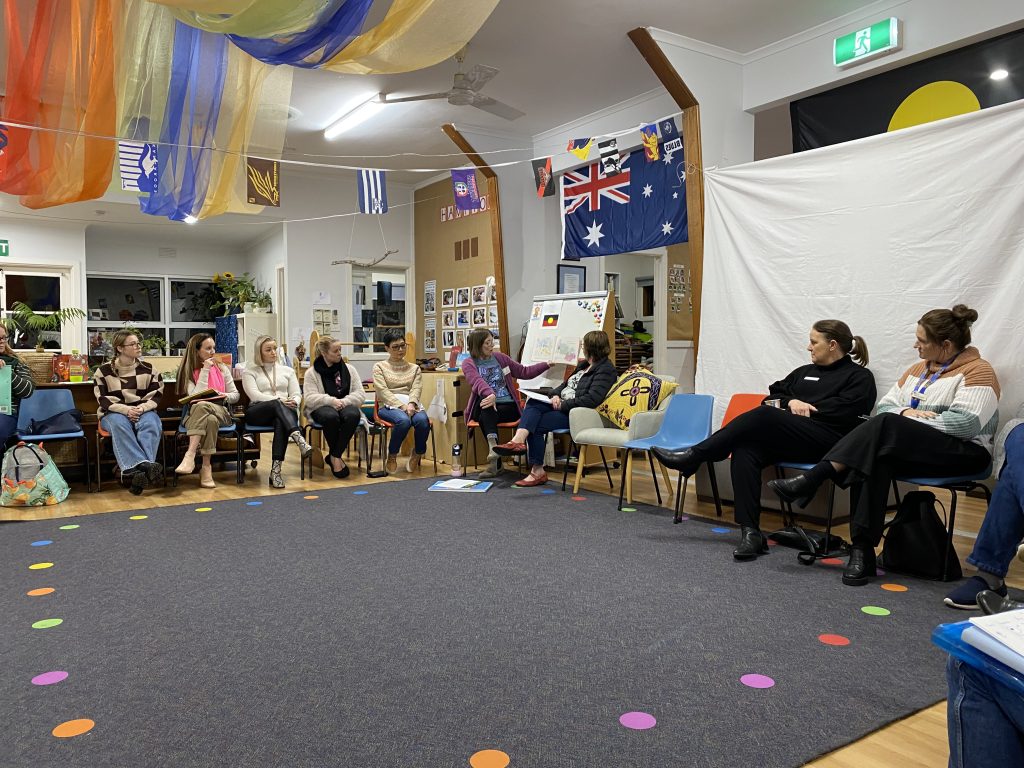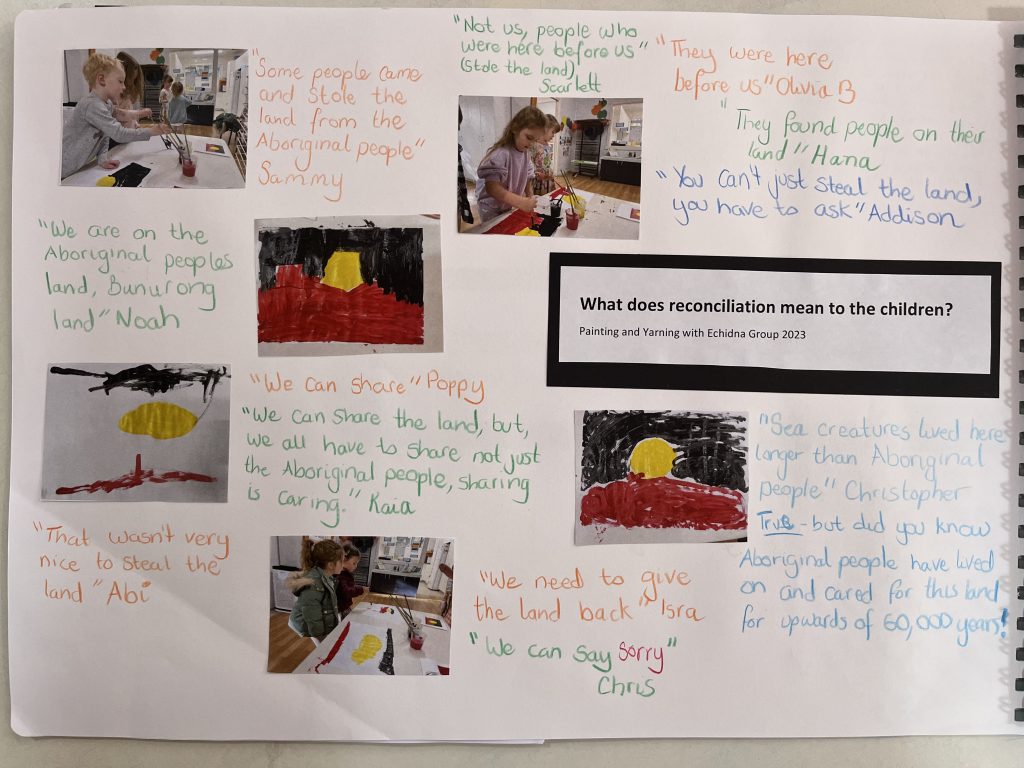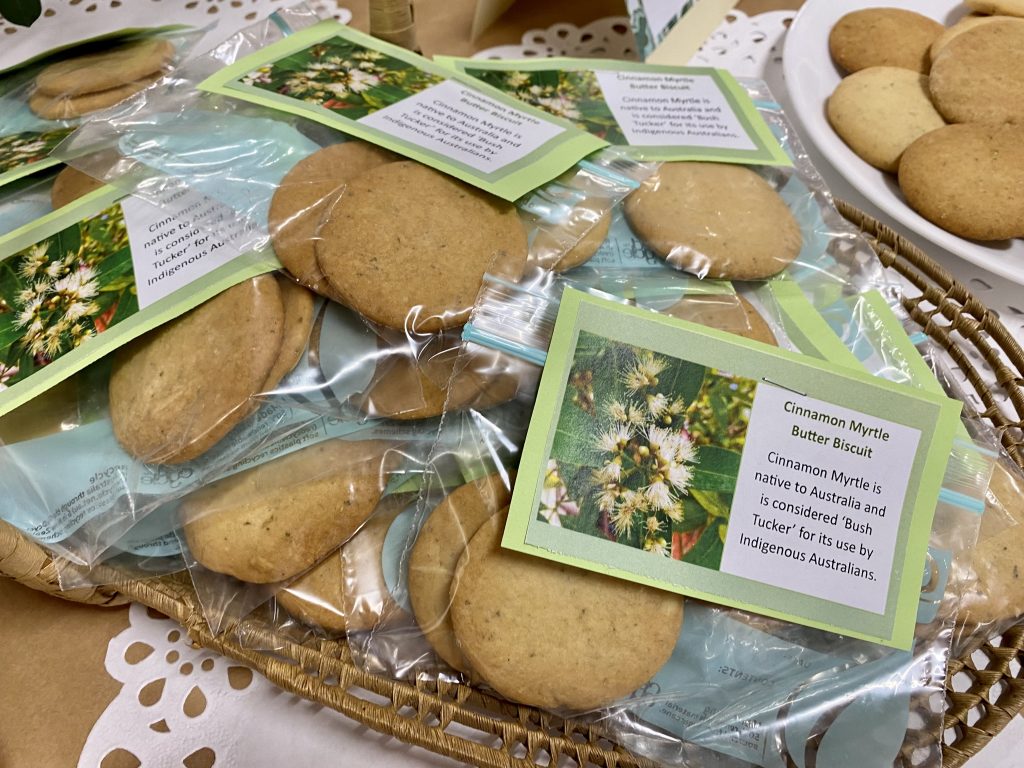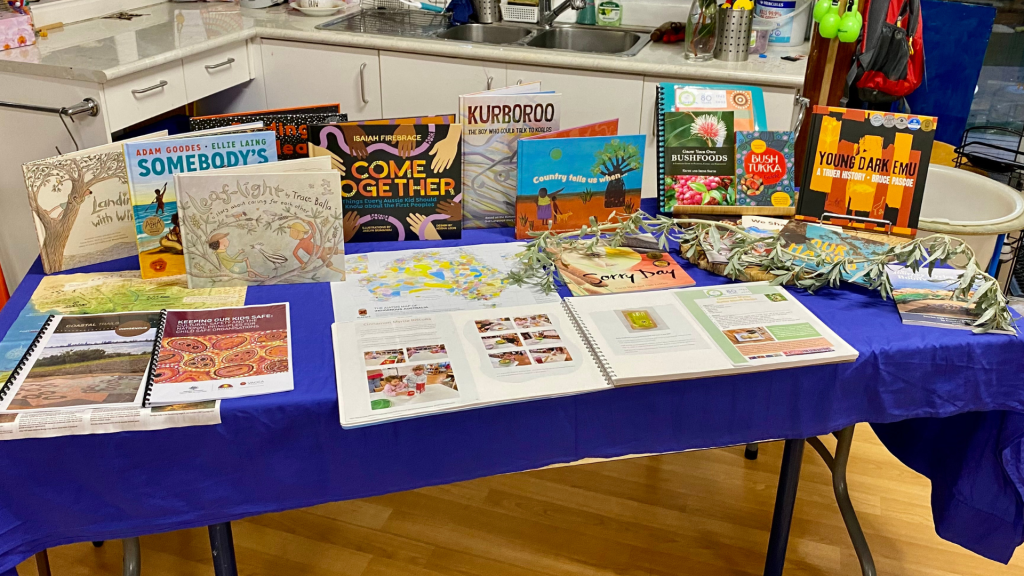
30 MayShaping young minds: a reconciliation journey through Indigenous education at Hampton Community Kindergarten
By Yao Cheng
“Bunjil created great people from the land, and that is why we call the land our mother, or the mother of creation. Never can the land be taken away. The land will always belong to Aboriginal people. Because we are part of the land, and the land is part of us.”
– Tony Garvey, Wurundjeri Elder, Welcome to Country Speech at THRIVE 15, May 2024
Reconciliation is an ongoing journey, and what better way to begin than in the early years. Nestled within the southeast of Melbourne’s beachfront lies Hampton Community Kindergarten. From sandy shores to lush greenery, this kindergarten’s commitment to honouring Indigenous culture and nurturing environmental awareness is shaping young minds for a more respectful future.
Nature play and indigenous connections: the kindergarten’s early initiatives
Conceived before the COVID-19 era, the program stemmed from educators’ recognition of the importance of children learning about their local coastal area and beach safety. Initially, the educators introduced its Beach Kinder and community engagement program prioritising nature pedagogy, allowing children uninterrupted time in nature to play and learn.

Sustainability and protecting local waterways is integral to the program. As the teachers delved deeper into ideas for educating children about the land, they naturally incorporated Indigenous perspectives. This was the beginning of the community kindergarten’s reconciliation journey. When the concept of a Reconciliation Action Plan was first introduced, they eagerly embraced it.
“We want to look more deeply into reconciliation and what it means for us as (an early childhood education) service (provider).” Emily Millward, Director of Hampton Community Kindergarten, recounts how their reconciliation journey initially evolved through their Beach Kinder program.
“It is Aboriginal People’s land, and their culture is the first culture present on the land. We went on this journey of connecting with local Indigenous people, attending yarning circles, learning more about where we were at and where we wanted to go to next on that journey.”

The journey was long and winding. Emily recalled there were some extensive critical reflections on their beliefs and their understandings for many of the kindergarten staff. Educators skilfully translated their learning into daily teaching and interactions with the children. Truth telling became an integral part of the curriculum, supplemented by planned activities aimed at fostering understanding of Indigenous people, their history, and culture.
Emily expressed her delight in seeing the children develop a sense of empathy, valuing their openness in sharing their learnings by “speaking from the heart.”
“When they learn about the history of the First Nations people, they respond with a little bit of sadness, and they want to think of ways that they can make things better in the future.”

An enriched learning journey through Bush Tucker program
Led by Kate Smith, a seasoned educator with over 15 years of experience and a deep passion for sustainability and Indigenous practices, the kindergarten introduced a Bush Tucker program.
Growing up in the country, Kate’s home was surrounded with vegetable gardens that served as vital sources of food for her family. Reflecting on her childhood, she shared, “If we wanted to eat something, we had to grow it. When I got older, I learned the Indigenous people of the areas were doing that before the white man was everywhere. There were no shops, so they had to eat what they could get off the land and the different uses for it.”
Guiding the children along the coastal shores, Kate teaches them to observe and appreciate coastal native plants like saltbush and seaweed, highlighting their significance in Indigenous culture. Back in the kindergarten’s Bush Tucker Garden, she introduces them to various Bush Tucker plants such as native thyme, apple berry, white elderberry, and midyim berry plants – all safe for the children to taste and explore.
“They are so open to learning new things, and tasting is always a hit.” Kate loves seeing children and their families embrace Indigenous culture and sustainable practice with open hearts.

She vividly recalls a moment during a beach outing when she offered a group of families a taste of native old man saltbush. “Just try it guys, have a bit of leaf and try it,” she encouraged. The response from some parents was one of excitement and curiosity, “Oh my god, I never knew this, where did you learn it?”
Nurturing young minds for a more respectful future

Emily believes the program not only offers valuable opportunities for children’s learning and development, but is a great opportunity to encourage children to share what they are learning with their family and community.
“When we cook (with our native plants) we serve up food to visitors and the children say, ‘Oh do you know, this has got the Cinnamon Myrtle, which is Bush Tucker in the biscuits.’ They enjoy sharing their knowledge and is able to take the learning home and teach their parents,” Emily explained.

Looking ahead, this small community kindergarten remains steadfastly committed to its reconciliation journey. The management committee has established a dedicated Reconciliation Action Plan (RAP) position to drive the kindergarten’s reconciliation efforts forward, and the kindergarten has invited a local Aboriginal artist to work with the children on a logo redesign. The logo will be used for the children’s T-shirts, hoping to spark conversations about the significance of Aboriginal art and the importance of reflecting Indigenous culture.




